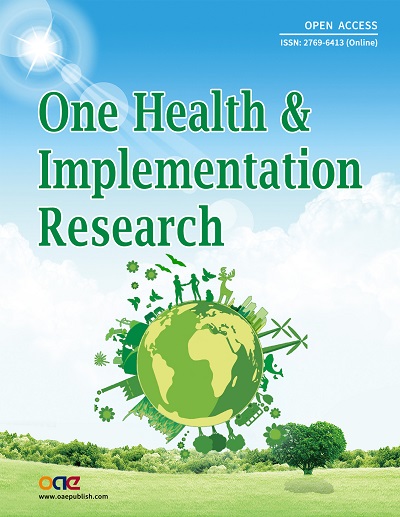REFERENCES
1. World Health Organization. WHO expert consultation on rabies: third report. Available from: https://apps.who.int/iris/handle/10665/272364. [Last accessed on 24 Aug 2023].
2. Hampson K, Coudeville L, Lembo T, et al. Estimating the global burden of endemic canine rabies. PLoS Negl Trop Dis 2015;9:e0003709.
3. WHO Rabies Modelling Consortium. The potential effect of improved provision of rabies post-exposure prophylaxis in Gavi-eligible countries: a modelling study. Lancet Infect Dis 2019;19:102-11.
4. Taylor LH, Hampson K, Fahrion A, Abela-Ridder B, Nel LH. Difficulties in estimating the human burden of canine rabies. Acta Trop 2017;165:133-40.
5. Wallace RM, Reses H, Franka R, et al. Establishment of a canine rabies burden in Haiti through the implementation of a novel surveillance program. PLoS Negl Trop Dis 2015;9:e0004354.
6. Cruz ARDD. Dogs, rabies and the filipinos: the anti-rabies campaign in the philippines, 1910-1934. Available from: https://www.dlsu.edu.ph/wp-content/uploads/pdf/conferences/research-congress-proceedings/2019/tphs-I-001.pdf. [Last accessed on 24 Aug 2023]
7. National rabies prevention and control program manual of procedures (2019). Available from: https://dmas.doh.gov.ph:8083/Rest/GetFile?id=648672. [Last accessed on 24 Aug 2023]
8. National rabies prevention and control program. Strategic Plan 2020-2025. Available from: https://rr-asia.woah.org/wp-content/uploads/2020/03/final-mtp-rabies_philippines.pdf. [Last accessed on 24 Aug 2023].
9. WHO. Zero by 30: the global strategic plan to end human deaths from dog-mediated rabies by 2030. Available from: https://www.who.int/publications/i/item/9789241513838. [Last accessed on 24 Aug 2023].
10. Undurraga EA, Meltzer MI, Tran CH, et al. Cost-effectiveness evaluation of a novel integrated bite case management program for the control of human rabies, Haiti 2014-2015. Am J Trop Med Hyg 2017;96:1307-17.
11. FAO, UNEP, WHO, WOAH. One health joint plan of action, 2022-2026. Available from: http://www.fao.org/documents/card/en/c/cc2289en. [Last accessed on 24 Aug 2023].
12. Rysava K, Miranda ME, Zapatos R, et al. On the path to rabies elimination: the need for risk assessments to improve administration of post-exposure prophylaxis. Vaccine 2019;37 Suppl 1:A64-72.
13. Rysava K, Espineda J, Silo EAV, et al. One health surveillance for rabies: a case study of integrated bite case management in Albay Province, Philippines. Front Trop Dis 2022;3:787524.
14. Swedberg C, Mazeri S, Mellanby RJ, Hampson K, Chng NR. Implementing a one health approach to rabies surveillance: lessons from integrated bite case management. Front Trop Dis 2022;3:829132.
15. Cleaveland S, Fèvre EM, Kaare M, Coleman PG. Estimating human rabies mortality in the United Republic of Tanzania from dog bite injuries. Bull World Health Organ 2002;80:304-10.
16. Rajeev M, Edosoa G, Hanitriniaina C, et al. Healthcare utilization, provisioning of post-exposure prophylaxis, and estimation of human rabies burden in Madagascar. Vaccine 2019;37 Suppl 1:A35-44.
17. R Core Team. The R Project for Statistical Computing. Available from: https://www.R-project.org/. [Last accessed on 24 Aug 2023].
18. Philippine Statistics Authority. 2020 Census of Population and Housing (2020 CPH) Population Counts Declared Official by the President. Available from: https://psa.gov.ph/content/2020-census-population-and-housing-2020-cph-population-counts-declared-official-president. [Last accessed on 24 Aug 2023].
19. United Nations Office for the Coordination of Humanitarian Affairs (OCHA). Available from: https://data.humdata.org/dataset. [Last accessed on 24 Aug 2023].
20. Khawplod P, Wilde H, Sirikwin S, et al. Revision of the Thai Red Cross intradermal rabies post-exposure regimen by eliminating the 90-day booster injection. Vaccine 2006;24:3084-6.
21. Department of Health, Republic of the Philippines. National Rabies Information System (NaRIS). Available from: https://rabies.doh.gov.ph. [Last accessed on 24 Aug 2023].
22. Lushasi K, Steenson R, Bernard J, et al. One health in practice: using integrated bite case management to increase detection of rabid animals in Tanzania. Front Public Health 2020;8:13.
23. Kimitsuki K, Saito N, Yamada K. et al. Evaluation of the diagnostic accuracy of lateral flow devices as a tool to diagnose rabies in post-mortem animals. PLOS Negl Trop Dis 2020;14:e0008844.
24. World Health Organization, Rupprecht CE, Fooks AR, Abela-Ridder B. Laboratory techniques in rabies, volume 1, 5th ed. Available from: https://apps.who.int/iris/handle/10665/310836. [Last accessed on 24 Aug 2023].
25. Changalucha J, Steenson R, Grieve E, et al. The need to improve access to rabies post-exposure vaccines: lessons from Tanzania. Vaccine 2019;37 Suppl 1:A45-53.
26. Hampson K, Abela-Ridder B, Brunker K, et al. Surveillance to establish elimination of transmission and freedom from dog-mediated rabies. BioRxiv 2016.
27. Chaudhari A, Kartal T, Brill G, Amano KJ, Lagayan MG, Jorca D. Dog ecology and demographics in several areas in the Philippines and its application to anti-rabies vaccination programs. Animals 2022;12:105.
28. Dizon TJR, Saito N, Inobaya M, et al. Household survey on owned dog population and rabies knowledge in selected municipalities in Bulacan, Philippines: a cross-sectional study. PLoS Negl Trop Dis 2022;16:e0009948.
29. World Health Organization. The Global Health Observatory. Metrics: Life Expectancy at birth. Available from: https://www.who.int/data/gho/data/indicators/indicator-details/GHO/life-expectancy-at-birth-(years). [Last accessed on 24 Aug 2023].
30. Swedberg C. An intersectoral approach to enhance surveillance and guide rabies control and elimination programs. University of Glasgow, 2023. Available from: https://theses.gla.ac.uk/83692/. [Last accessed on 24 Aug 2023].





